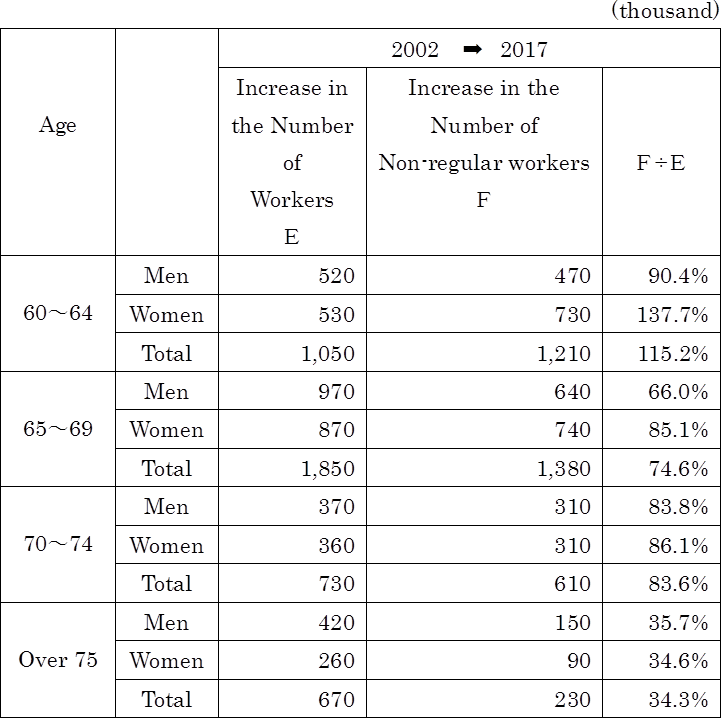Column Finance and the Social Security System 2018.12.04
【Aging, safety net and fiscal crisis in Japan】No.139: An increase in the number of elderly in the workforce
Table 1 shows the population aged 60 years and older, the number of workers among them, and the working ratio by age group and gender. The number of workers includes not only regular employees in companies and governments but also self-employed persons and non-regular employees. Notable points are as follows.
(1) In 15 years, from 2002 to 2017, the number of workers increased significantly in each age group for both genders. This is because the working ratio has increased in addition to an increase in the population aged 60 years or older.
(2) While the working ratio of the population aged 60 to 64 years is 67.5%, the ratio of the population aged 65 to 69 years is 44.4%, and the ratio of the population aged 70 to 74 years is 27.1%. This suggests that there is scope for raising the working ratio by improving the employment environment for the elderly.
(3) Most of the increase in the number of workers is triggered by non-regular workers (Table 2). It is necessary to provide more opportunities for elderly non-regular workers with ability and motivation to become part of the regular staff.
Table 1: The number of workers aged 60 years or older

Note: The total numbers do not necessarily agree because they are rounded-off
Source: Statistics Japan Data Base
Table 2: A breakdown of the increase in the number of workers from 2002 to 2017

Note: The total numbers do not necessarily agree because they are rounded-off
Source: Statistics Japan Data Base
